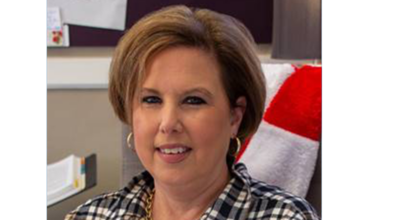Editorial: Addressing mental illness has to be proactive
Published 12:00 am Sunday, June 26, 2016
Last week a 29-year-old man pulled into the Summit gas station at Hogansville and Davis roads, doused himself in gasoline and lit himself on fire.
It’s shocking, and the first question out of most people’s mouths was “why?” At this point we don’t know for certain, but mental illness likely played a role.
The general public may often see these actions and struggle to understand how anyone could get to a point where they would take such an extreme measure. For those who have experience — either firsthand or with someone close — with certain mental illnesses, there is an understanding of the skewed rationale that can sometimes guide a person’s thoughts.
Mental illness — true mental illness — is not the symptom of society, a bad upbringing, selfishness or failure to fit in. It is a chemical imbalance in the brain, causing those with it to have an altered thought processes and sense of reality. And, sadly, it is too often an action like this that spurs the conversation — far too late.
That’s why it’s encouraging that the Troup County Mental Health Court has been successfully operating for three years and graduated its first class earlier this month. According to the Treatment Advocacy Center website, of the more than 92,600 inmates behind bars in Georgia in 2005, more than 14,800 of them suffered from some sort of severe mental crisis.
The court defers offenders with mental health problems to the program, where they must talk to counselors, take prescriptions and perform other tasks to show they are committed to getting better and on a better path.
Mental illness comes in many forms, and it’s not always obvious.
The National Alliance on Mental Illness, or NAMI, gives the following as some signs of possible mental illness, though noting that different types of illnesses each have different symptoms:
• Excessive worrying or fear.
• Feeling excessively sad or low.
• Confused thinking or problems concentrating and learning.
• Extreme mood changes, including uncontrollable “highs” or feelings of euphoria.
• Prolonged or strong feelings of irritability or anger.
• Avoiding friends and social activities.
• Difficulties understanding or relating to other people.
• Changes in sleeping habits or feeling tired and low energy.
• Changes in eating habits such as increased hunger or lack of appetite.
• Changes in sex drive.
• Difficulty perceiving reality — delusions or hallucinations, in which a person experiences and senses things that don’t exist in objective reality.
• Inability to perceive changes in one’s own feelings, behavior or personality — ”lack of insight,” aka anosognosia.
• Abuse of substances like alcohol or drugs.
• Multiple physical ailments without obvious causes — such as headaches, stomach aches, vague and ongoing “aches and pains.”
• Thinking about suicide.
• Inability to carry out daily activities or handle daily problems and stress.
• An intense fear of weight gain or concern with appearance — mostly in adolescents.
In children:
• Changes in school performance.
• Excessive worry or anxiety, for instance fighting to avoid bed or school.
• Hyperactive behavior.
• Frequent nightmares.
• Frequent disobedience or aggression.
• Frequent temper tantrums.
Mental health is also a top factor in people at risk of committing suicide. The American Foundation for Suicide Prevention lists signs to look for in someone who may suicidal, which includes some of the same signs as the NAMI list:
If a person talks about:
• Being a burden to others.
• Feeling trapped.
• Experiencing unbearable pain.
• Having no reason to live.
• Killing themselves.
Specific things to look out for include:
• Increased use of alcohol or drugs.
• Looking for a way to kill themselves, such as searching online for materials or means.
• Acting recklessly.
• Withdrawing from activities.
• Isolating from family and friends.
• Sleeping too much or too little.
• Visiting or calling people to say goodbye.
• Giving away prized possessions.
• Aggression.
People who are considering suicide often display one or more of the following moods:
• Depression.
• Loss of interest.
• Rage.
• Irritability.
• Humiliation.
• Anxiety.
Often, we are too timid to step in if we see these types or behaviors, or dismiss them as temporary factors like stress or sadness. Though some of those can mirror mental illness signs — what’s the harm in asking?
Many may dismiss it, and trying too much may make the person defensive, but if you feel your concerns are valid, encourage them to talk to a psychiatrist, therapist or general practitioner, or reach out to a support group. Give them the resources and let them know they have support.
Georgia Supreme Court Chief Justice Hugh P. Thompson, in his address to the mental health court graduates, told them, “You are in control of your lives.”
“Find family and friends who can be a touchstone for you … who can help you … look around the room and remember the faces that are here today,” he said.
They may initially feel ashamed to admit their problems to family member or friend — especially given social stigmas — but encouragement and resources may spur them to take action. Continue to check with them and be their “touchstone.”
For pressing situations, people may call the Suicide Prevention Lifeline at 1-800-273-8255, or 911 in case of emergency.
For more information and resources, people may call the NAMI HelpLine 1-800-950-NAMI (6264) or email info@nami.org. The HelpLine can be reached Monday through Friday, 10 a.m.–6 p.m.
Also check out the NAMI website at https://www.nami.org and American Foundation for Suicide Prevention at https://afsp.org.


